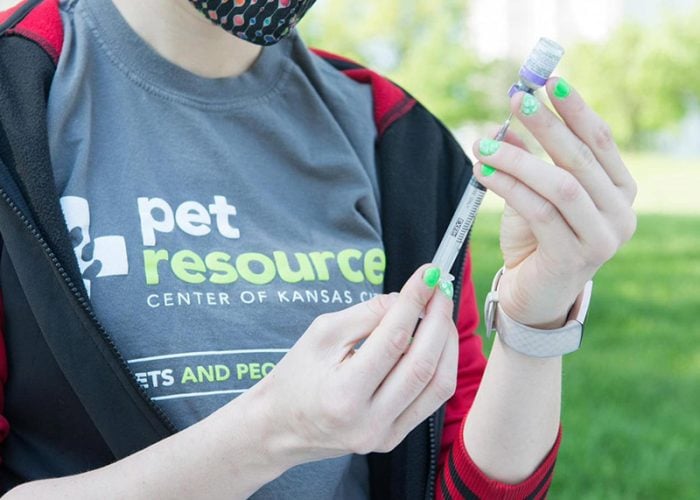Parvo. Even among people who don’t know much about dogs or dog health, it’s a word that carries weight. Everybody knows parvo.
But what is it? How can it be prevented? How can it be treated?
What is it?
Canine parvovirus appeared for the first time in 1978. There are two strains that are the most prevalent: CPV-2a and CPV-2b. The parvo vaccination handles both of them.
Parvo damages the lining of the intestinal tract, which causes severe dehydration, bloodstream infections, and electrolyte imbalances. Because it’s a virus, there is no “cure.” The virus has to run its course.
How is it spread?
Parvo remains very stable in the environment, which means that it can be difficult to eradicate. Most of the time parvo is spread through feces, which contains heavy concentrations of the virus. This can happen directly, when another dog sniffs/eats an infected dog’s feces, or indirectly, like coming into contact with another dog’s fur, food, or water bowl that has been contaminated with parvo-infected fecal matter.
Most cleaning agents can’t get rid of parvo, which means that an infected home may stay that way for a while. It’s so dangerous that if a dog contracts parvo, that household shouldn’t bring home a puppy for a couple of years, because puppies are so susceptible.
How do I recognize it?
Early diagnosis is key to successful treatment. Let’s say it again: early diagnosis is key.
Symptoms include:
- severe, bloody diarrhea
- lethargy
- refusal to eat
- fever
- vomiting
- weight loss
If you suspect your dog has parvo, go to the vet right away. Do everything you can to avoid possible contamination of the doctor’s office by calling ahead if you can, or telling them immediately what you suspect. They’ll most likely want to put you in a room right away to contain the spread of the virus.
How is it treated?
Like we mentioned, there isn’t really a treatment for parvo, or rather, treatment is to mitigate the symptoms of the disease while the virus runs its course. Generally, treatment consists of IV fluids to keep them hydrated, antibiotics to help stave off septicemia (blood poisoning), probiotics to help get their intestinal flora back on track, vitamins (injected) to help the immune system, and glucosamine to coat the intestines. This course of treatment can yield good results if, again, it’s caught early.
How can I prevent it?
Vaccinations, vaccinations, vaccinations. Parvo is strong, lasts a long time in the environment, and is difficult to eradicate using traditional cleaning agents, so the best thing you can do for your pup is to make sure they’re always up on their DA2PP vaccination, which is a core vaccine. That way they’re protected no matter what.


